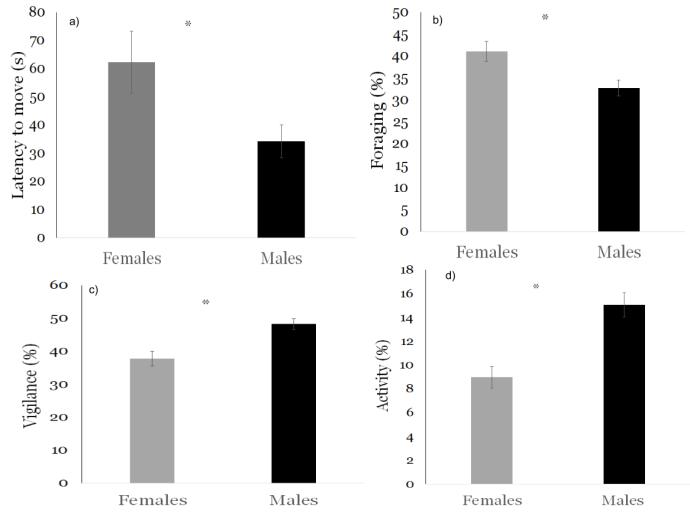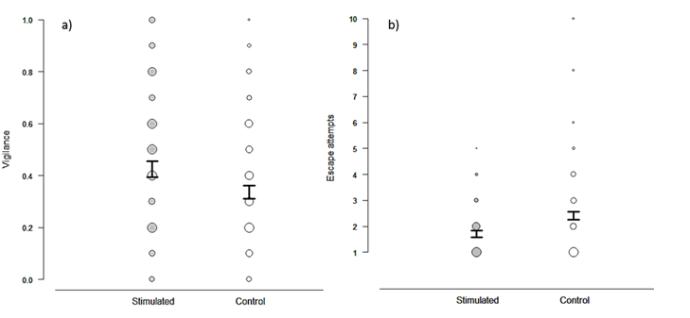Results
Sex differences
Females were found to be slower to start moving after the test had started (figure 1a).
Females also foraged more than males (figure 1b).
Males on the other hand were more active than females (figure 1c).
Males were also more vigilant than females (figure 1d).

Effect of cognitive stimulation
When looking at the effect of the cognitive stimulation, there was no effects on the behaviours foraging, activity or the latency to move. However, t he cognitive stimulation increased vigilance and decreased the number of escape attempts in adult red junglefowl (Figure 2a, b).

Responsible for this page:
Director of undergraduate studies Biology
Last updated:
06/15/16
